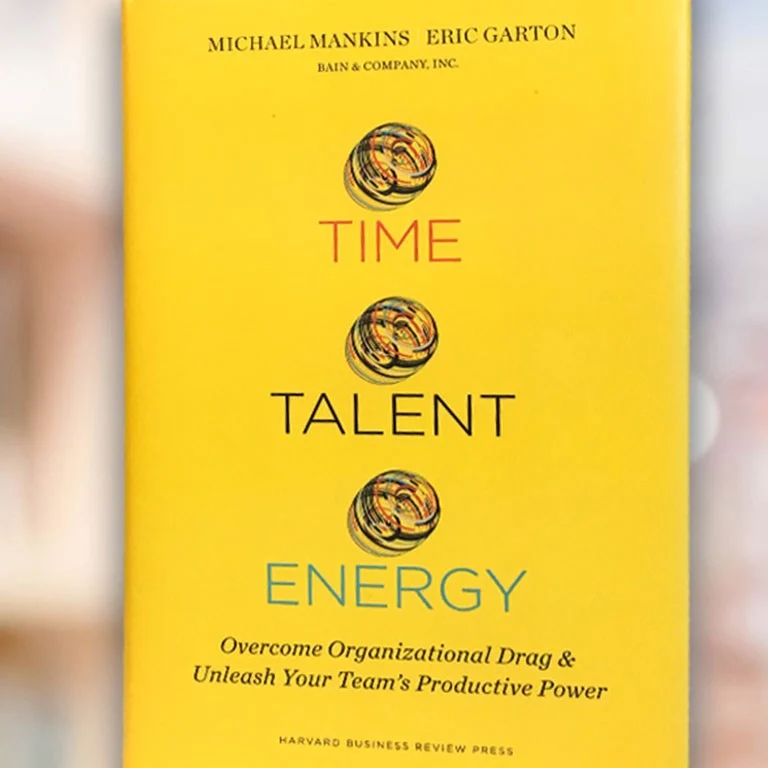HBR.org
This article originally appeared on HBR.org.
A year into their jobs, how many employees still have the unbridled energy and enthusiasm that they brought with them to their first day on the job? How many still believe they can make a difference?
Unproductive routines, corporate bureaucracy, and “administrivia” kill ambition and sap energy for far too many employees. That’s demoralizing for employees, and a waste for companies, which badly need the full energy and commitment of all their workers.
The novelty of any new job will wear off, but employees can remain energized and engaged if companies attack the true causes of organizational drag—all the practices, procedures, and structures that waste time and limit output—not just the symptoms. The symptoms may seem to be minor annoyances and inconveniences that could be wiped out without much effort—too much process, too many meetings, meaningless goals, and time wasted on work that no one will ever care about.
But those symptoms stem from fundamental problems. Companies wind up in trouble and squander the time, talent, and energy of their workforce when they lose focus, spend money on things that don’t make a difference to employees or the future of the business, and use operating models that are out of whack.
By attacking the root causes of organizational drag, companies can eliminate unnecessary work, reenergize the workforce and, at the same time, put the business on a better course. They can do this by following the three R’s:
- refocus on strategic priorities
- reset the budgets
- redesign the operating model
Together, these initiatives can help remove the clutter and distraction that create drag.

Eric Garton: Time, Talent and Energy
The key to tackling low productivity growth is to efficiently and effectively use your scarcest resources.
Refocus on Strategic Priorities
The first step is to refocus the organization on the most important business units, customer segments, and geographies in which the company has a repeatable formula for growth and a “right to win.” Within business units, executives should eliminate any sources of profitless volume. Look closely, and you’ll find that most companies have stretched their brands and product portfolios to customers and markets in which they are undifferentiated and profits are weak. These proliferating operations lead to complexity, which contributes to drag as well as costs that rob resources from better and potentially more-profitable ideas.
For example, large biopharma companies compete in many categories and tend to accumulate an array of follower positions. But that drags down shareholder returns. Recent analysis by Bain found that the biggest biopharma value creators are category leaders, and those that combine their category leadership with portfolio focus within their categories deliver annual total shareholder returns more than twice those of companies that are diversified followers. That’s why a growing number of biopharma firms have been selling or spinning off parts of their businesses, such as Novartis’s sale of its influenza vaccine business to CSL, Bristol-Myers Squibb’s sale of its diabetes division to AstraZeneca, and Biogen’s spin-off of its hemophilia business.
Trimming a portfolio of drag creators is often an act of managerial courage. It’s most likely that top-line growth will suffer during the transition, but the result will be a more profitable portfolio that is geared for growth. Companies often use separations and carve-outs to surgically eliminate the slower-growing, less-profitable, or less strategically aligned parts of their business. But if companies do not also address the underlying factors that got the company to that spot in the first place, their performance will still fall short of internal and external expectations.
Reset the Budgets
How companies allocate money can contribute to organizational drag by keeping nonessential work going. But it is not easy to make the tough decisions to defund.
We recommend zero-based budgeting and planning to make the choices clearer. This also helps get over the dilemma that companies often face when they are making cuts: Should they eliminate the work and then reduce the budgets that allowed these costs, or should they shrink the budgets to squeeze out the unnecessary work? While the former approach is friendlier from a change management perspective, we usually find that it leads to only incremental change. This is why we find a zero-based approach preferable.
A zero-based budgeting and planning process using stretch targets challenges conventional thinking and brings forth bolder ideas. Companies with foresight will make this change before the market or an activist investor demands it. A simple example: Before 3G Capital used a zero-based system to clarify roles and objectives, eliminate layers, and standardize processes at Kraft Heinz, one manager reported that he struggled to keep pace with a flood of up to 300 emails and numerous unproductive meetings in a typical day. Now his inbox collects fewer than 40 daily emails, and meetings are more focused and efficient. Zero-basing can both reset the cost structure and keep out cost over time.
Redesign the Operating Model
Having streamlined the portfolio and reset budgets, it is important to redesign the operating model—that is, the way the company is organized to deliver on its strategy—to eliminate any unnecessary work or dysfunctional processes that bog things down. Thinking “customer-back” or “frontline-back” provides a powerful lens through which to eliminate work. Just ask: How does this activity help serve our customers better? Companies can also look for complexity and inefficiencies that are hidden in the seams of the organization—in cross-functional, cross-geographical, or cross-business unit activities, where no executive or team has a single point of accountability. Every organization has seams, and these are fruitful areas for optimization and redesign. Where inefficiencies are found in ongoing operations, companies should consider “leaning out,” centralization, or outsourcing.
Organizations operate on formal and informal processes, and executives should seek out complexity and waste in both areas. Formal processes and systems enshrine ways of working, so it’s easier to attack them systematically. But hidden and informal factors that create organizational drag tend to get overlooked. These factors are often more behavioral—how the management team makes decisions, for example.
Consider the remarkable turnaround at Ford. In 2006 then-new CEO Alan Mulally and his senior team not only set a new strategic path but also overhauled Ford’s operating model. The company moved from regional business units to a global functional model, setting the stage for more-efficient and effective operations, such as reducing the number of vehicle platforms. Governance and behaviors changed as well, as Mulally pushed for open debate and honesty about where problems were cropping up. He encouraged his team to simplify the ways they worked, eliminating ineffective meetings and liberating thousands of unproductive hours. Thanks to a new strategy and an operating model redesign, Ford returned to profitability without a bailout from the American taxpayer.
Following these three steps can elevate a company’s performance potential by creating an environment in which individual energy and creativity are converted to productivity. That can initiate a virtuous cycle in which improved performance liberates cash and capital to fund new growth opportunities and reward talent, unlocking new levels of organizational performance. Employees working in this winning environment will find that the new-employee spirit can be sustained and that their work feeds their individual energy rather than destroying it.
Eric Garton is a partner in Bain & Company’s Chicago office and leader of the firm’s Global Organization practice. He is coauthor of Time, Talent, Energy: Overcome Organizational Drag and Unleash Your Team’s Productive Power (HBR Press, March 2017).

Time, Talent, Energy
Learn more about how the best companies manage their people's time, talent and energy with as much discipline as they do their financial capital.